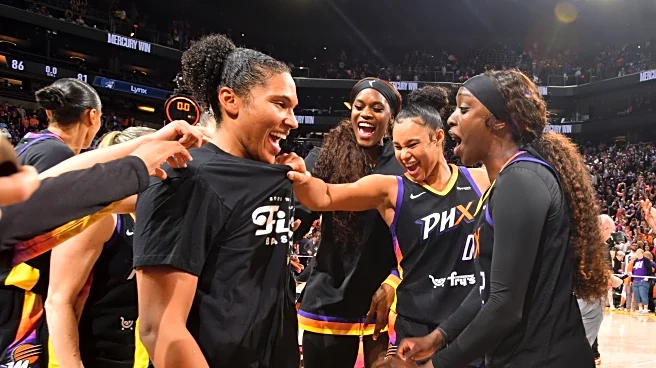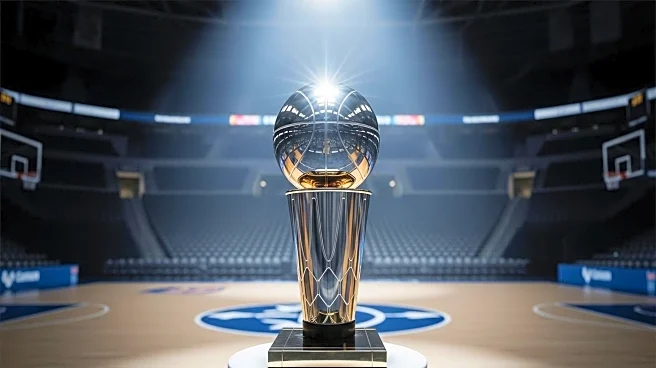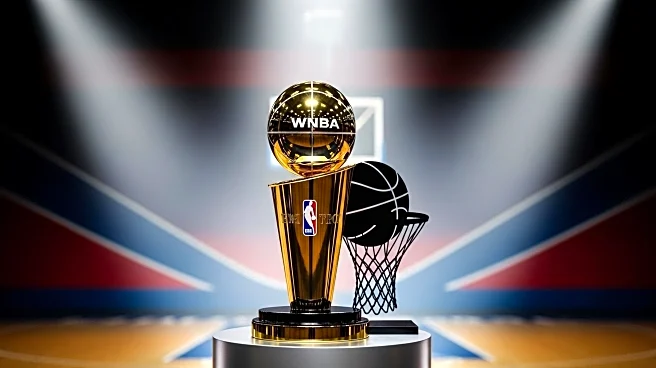What is the story about?
What's Happening?
The 2025 WNBA Finals, featuring the Las Vegas Aces and the Phoenix Mercury, garnered significant attention with impressive TV ratings. Game 1, broadcast on ESPN, averaged 1.9 million viewers and peaked at 2.5 million, marking the highest viewership for a WNBA Finals game since 1997. Games 2 and 3 also attracted substantial audiences, with 1.2 million and 1.3 million viewers respectively. WNBA legend Sheryl Swoopes, who played in the 1997 Finals, humorously addressed the ratings during an episode of The Women's Hoops Show, acknowledging the growth of the league and the increased interest in women's basketball.
Why It's Important?
The strong TV ratings for the 2025 WNBA Finals indicate a growing interest in women's basketball, reflecting broader societal shifts towards gender equality in sports. This increased viewership can lead to greater sponsorship opportunities, higher player salaries, and more media coverage, benefiting the league and its athletes. The attention also highlights the talent and competitiveness within the WNBA, potentially inspiring more young athletes to pursue basketball. As the league continues to grow, it may influence public policy and corporate strategies regarding gender representation in sports.
What's Next?
The WNBA may leverage these ratings to negotiate better broadcasting deals and attract more sponsors, further enhancing the league's financial stability and visibility. Stakeholders, including team owners and players, might advocate for increased investment in marketing and facilities to capitalize on the growing interest. Additionally, the league could explore expanding its reach internationally, tapping into new markets and audiences. Continued success in viewership could prompt discussions on increasing the number of teams or games in future seasons.
Beyond the Headlines
The rise in WNBA viewership could contribute to changing cultural perceptions of women's sports, challenging stereotypes and promoting inclusivity. This shift may encourage other sports leagues to invest more in women's competitions, fostering a more equitable sports industry. The increased visibility of female athletes can also serve as a powerful tool for social change, inspiring young girls and promoting diversity in sports leadership roles.
AI Generated Content
Do you find this article useful?













